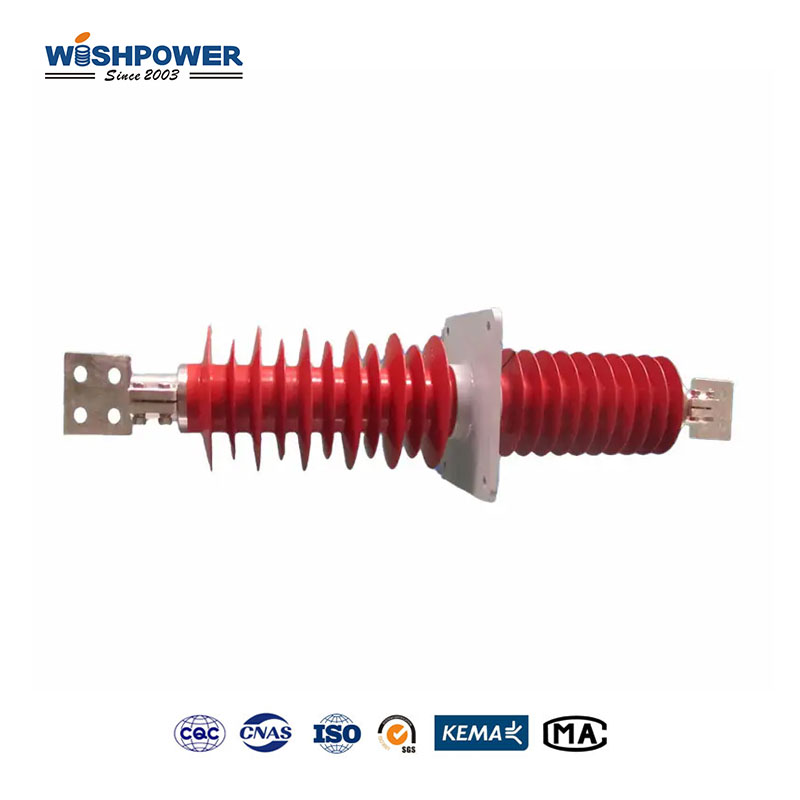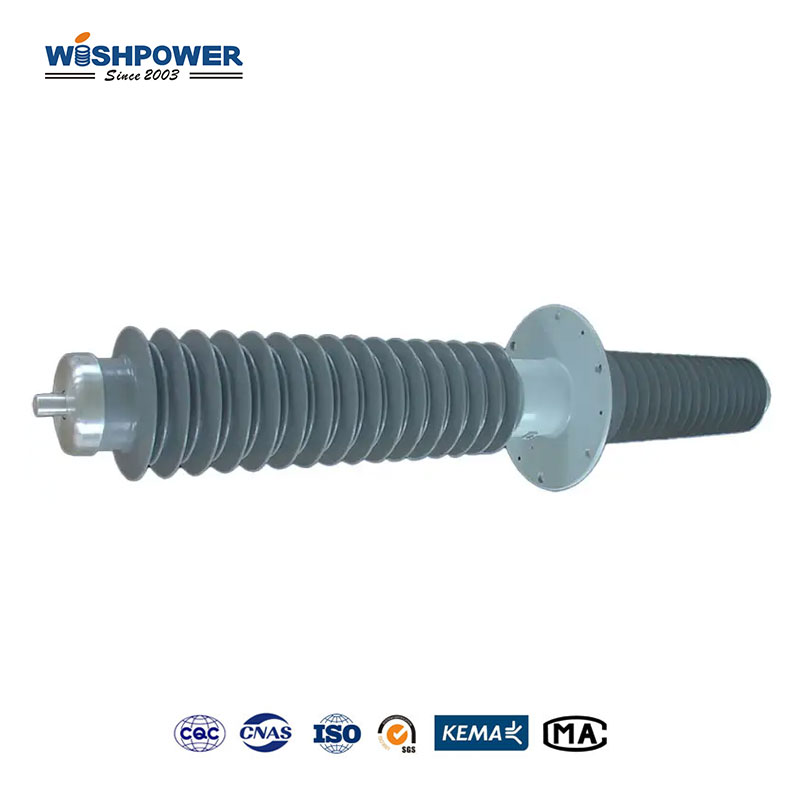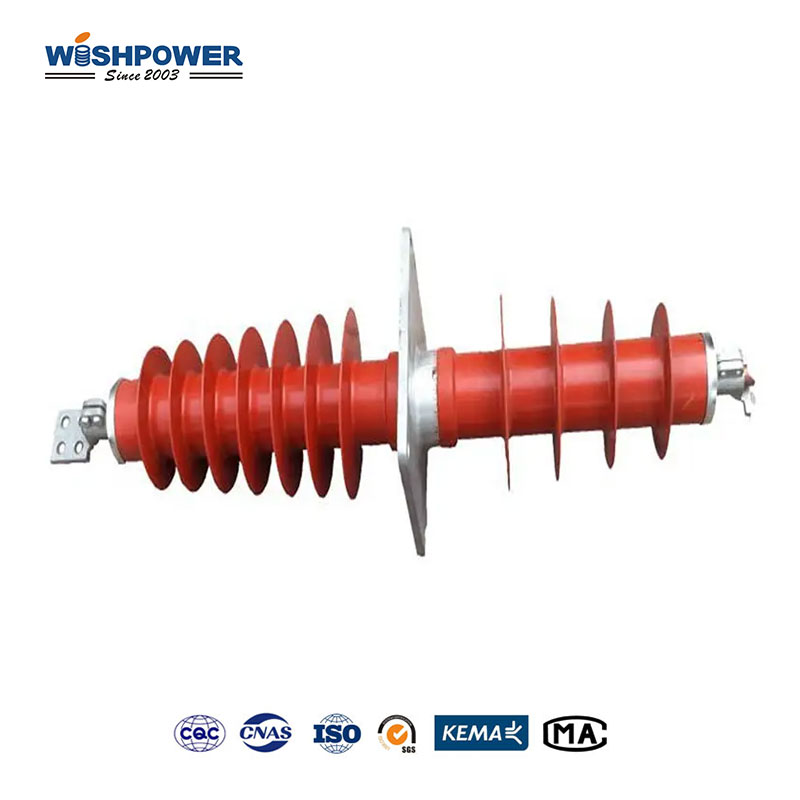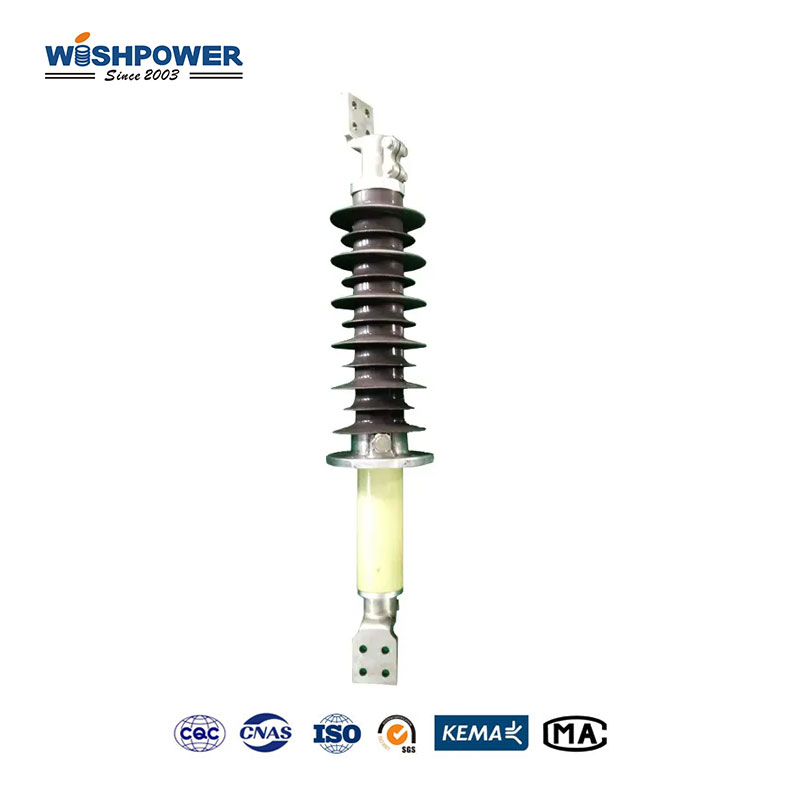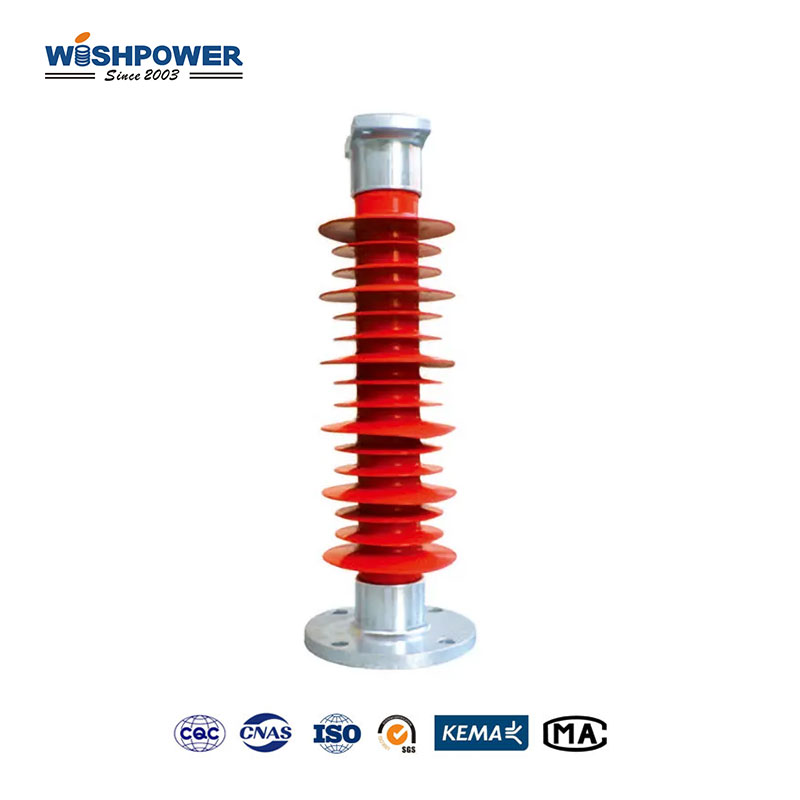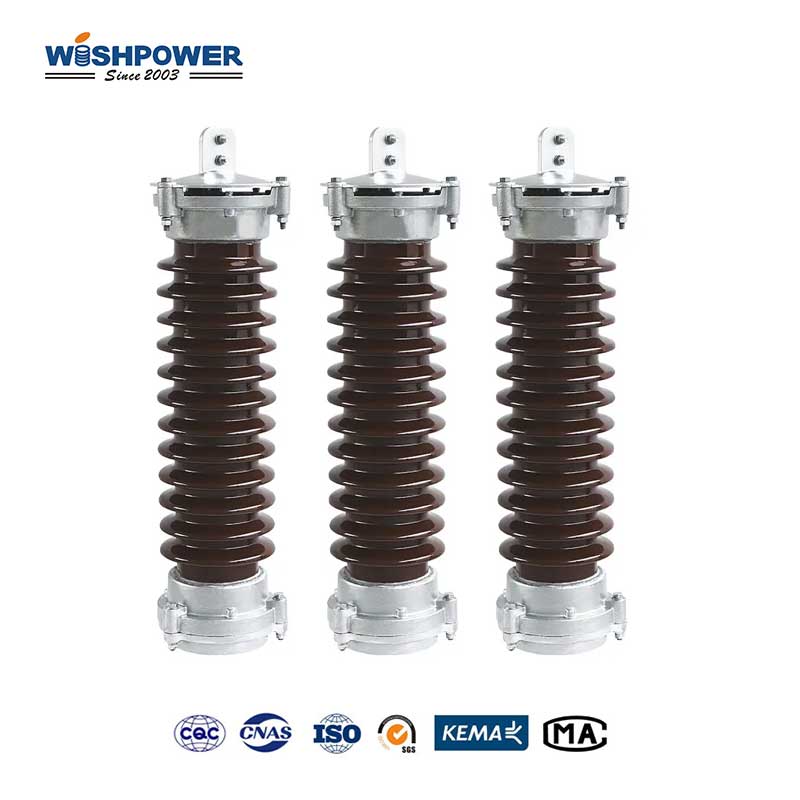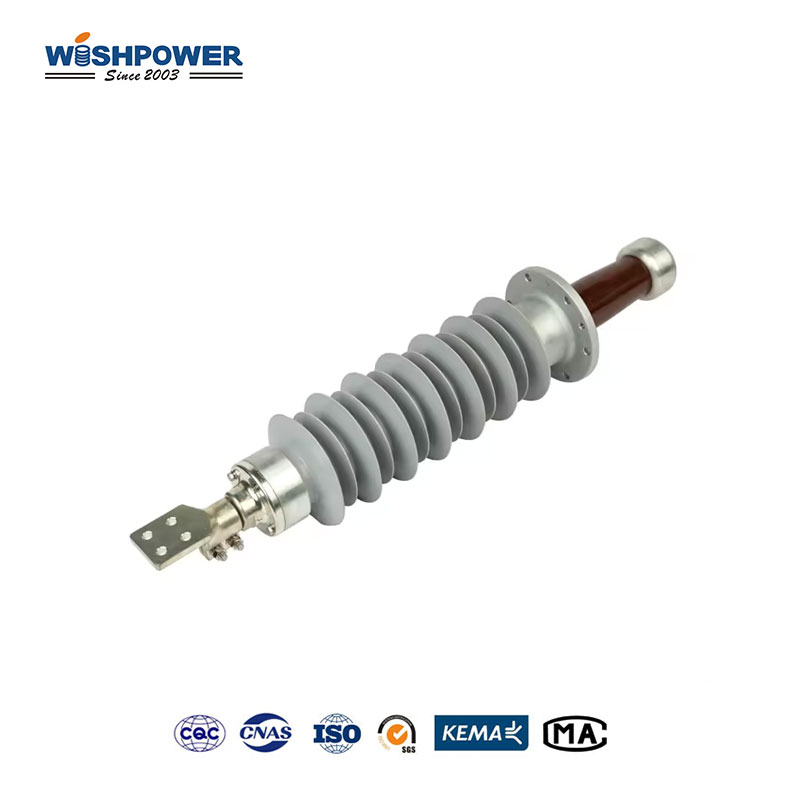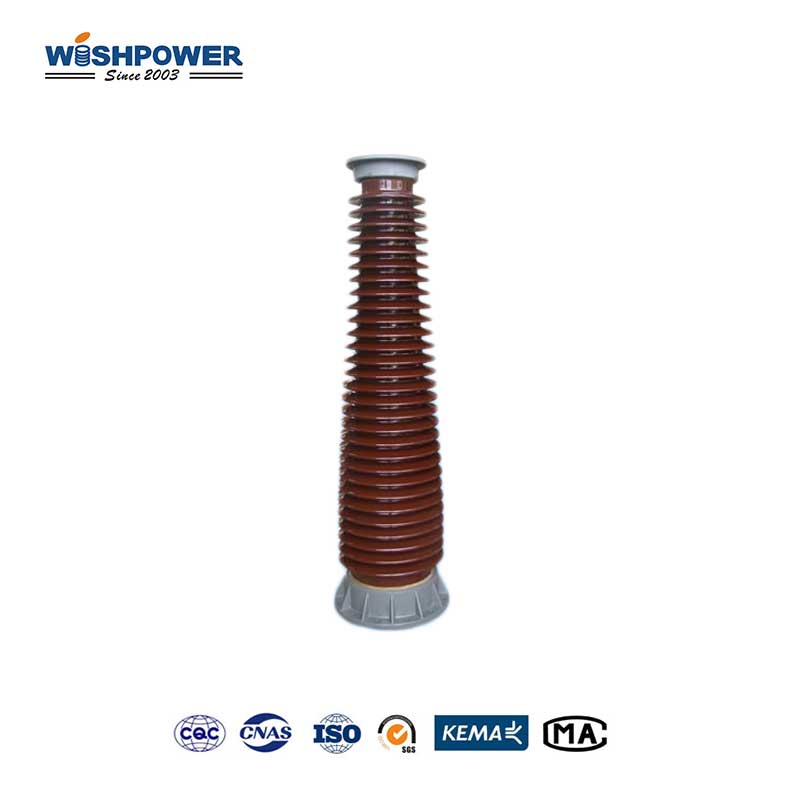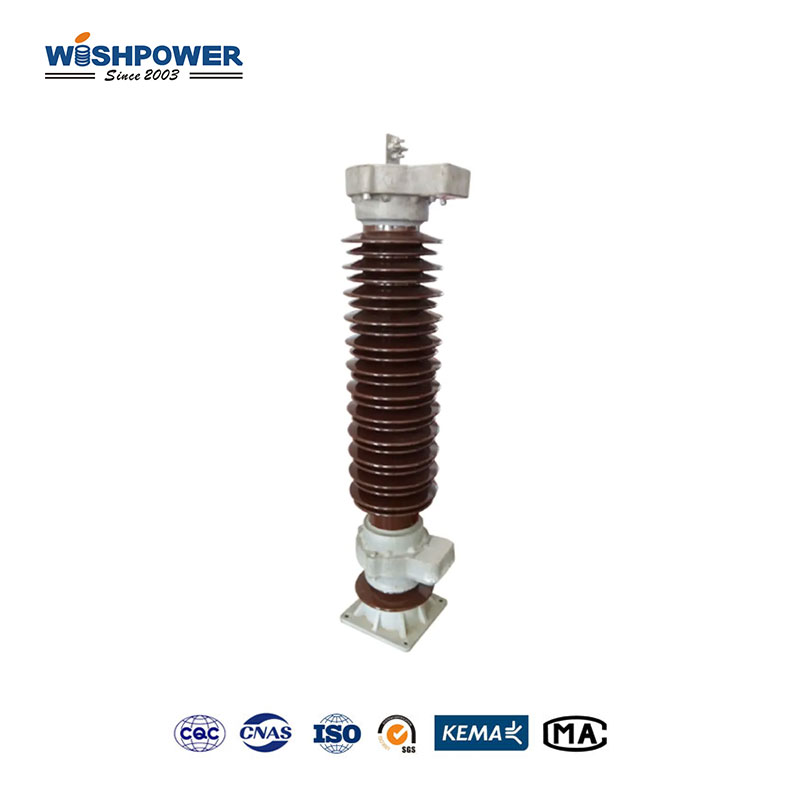Specification
| Type |
FXBW-500/160 |
| Rated voltage(KV) |
500 |
| Specified mechanical load |
160 |
| Section length(mm) |
4080 |
| Min Arc distance(mm) |
3730 |
| Leakage distance (mm) |
12750 |
| Lightning impulse withstand BIL(KV) |
2250 |
| Power frequency withstand(wet) (KV) |
740 |
The table above is just one of our product parameters. If you want more information, please get in touch with info@wishpower.net or download the file below.
What is Transformer Neutral Bushing?
Transformer Neutral Bushing made of composite materials offers a highly effective and reliable means of connecting the transformer neutral point to an external grounding system. The insulation properties, high dielectric strength, and resistance to environmental stresses (pollution, moisture, UV, etc.) of the composite materials used in its construction make this suitable for use in various functional heating appliances. By optimizing these bushings to perform under high voltage and physical stress, leakage currents are prevented while stability and safety are maintained. Using composite materials, the bushing becomes lightweight, corrosion-resistant less prone to breakage, and suitable for both outdoor and high-stress environments. The design considerations for the transformer’s operational longevity and robust performance ensure efficiency and stability overall.
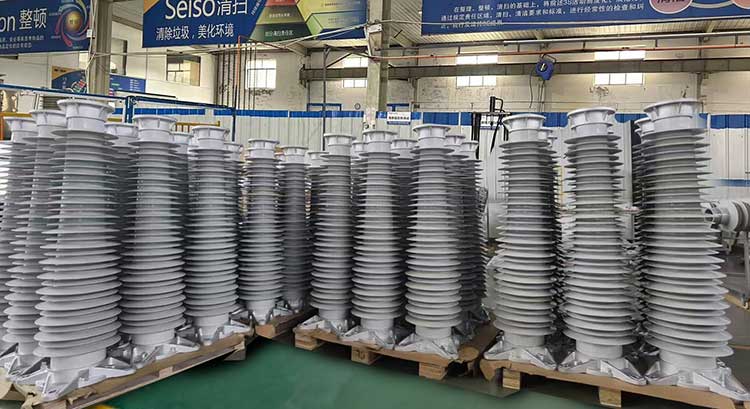
Where is it on the transformer?
Though installed at the transformer neutral point, the Transformer Neutral Bushing is located on the transformer’s tank or casing. This bushing has been positioned such that it can allow excess electrical currents to safely pass to the ground by connecting the neutral end of the transformer winding to the grounding system. Through the connection of the transformer winding’s neutral point to the ground, the neutral bushing is a crucial part of the system’s security function and helps protect the transformer and the overall network from transient overvoltages and fault currents. The location and function of this safety device together so effectively stabilize the transformer during operational fluctuations and beginning fault events, therefore increasing safety and reliability.
Function
- Grounding Connection
Such that in case there is excess current it flows to the ground at the external grounding system through the Transformer Neutral Bushing. It also stabilizes the transformer during operation.
- Fault Current Protection
It allows fault current such as a short circuit through the transformer so that the transformer will not be damaged and also helps save the system disturbance.
- Voltage Stabilization
The bushing grounds the transformer neutral point to assist in a balanced distribution of voltage over transformer windings which must be stable and efficient.
- Surge Protection
The bushing helps protect the transformer from voltage surges such as lightning strikes, by safely dissipating these lightning strikes amplified up to the transformer’s highest rated voltage, to the ground.
- Insulation and Safety
As an example, the bushing’s composite material is itself constructed to withstand high electrical stresses and offers excellent insulation, thereby improving the safety of such an environment and reducing leakage currents within highly stressed high-voltage environments.
Safety
Safety is the main point of interest when designing composite bushings. With high dielectric strength to avoid electrical breakdown and good electrical insulation, composite materials are the materials of choice. Composite materials are inherently safe because they are lightweight, shatter-resistant, and do not generally break easily under the influence of mechanical impact, unlike porcelain insulators. Moreover, the hydrophobic nature of the composite materials reduces surface contamination accumulation and limits the risk of leakage and flashover in wet or polluted conditions. The insulation integrity being maintained, and the leakage currents blocked improves safety from contamination. In general, composite bushings are highly safe resilient, and adaptable to many types of environmental conditions, and hence they are suitable for transformer grounding applications.
Certificate

Factory

Hot Tags: Transformer Neutral Bushing, Bushing, Thailand, manufacturers, ISO factory, wholesale, KEMA, high quantity, best, price, low to high voltage






